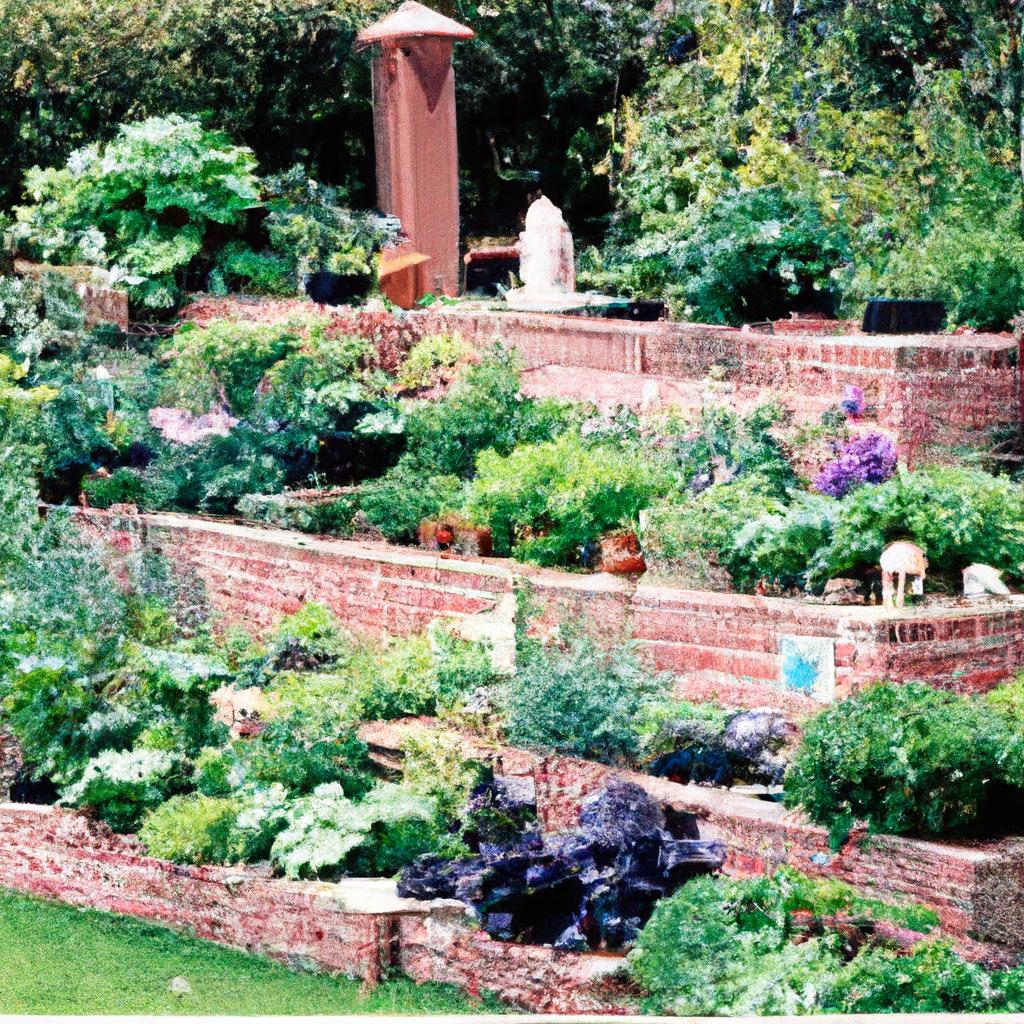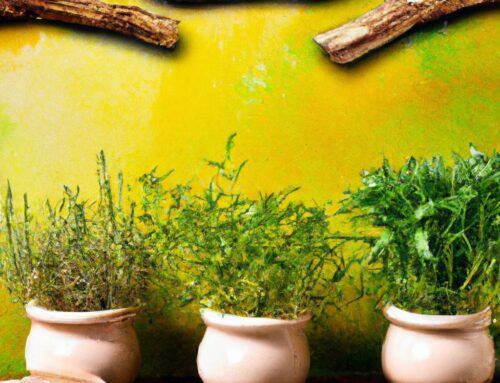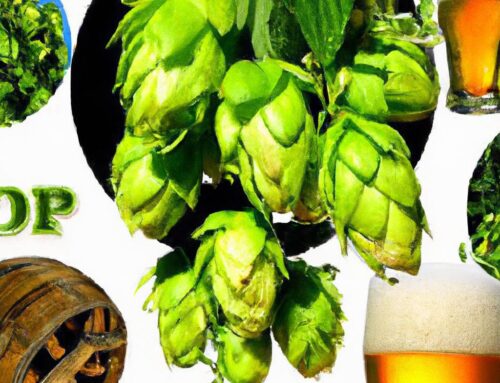Imagine strolling through your backyard and plucking ripe, juicy berries from a bush or snipping fresh herbs to add to your dinner. With edible landscaping, you can turn your outdoor space into a bountiful oasis of food and beauty. In this article, we will explore the benefits and practicalities of integrating food plants into your yard, creating a vibrant and sustainable landscape that nourishes both body and soul.
Table of Contents
- Exploring the Benefits of Edible Landscaping
- Selecting the Right Food Plants for Your Yard
- Designing and Implementing a Functional Edible Garden
- Sustainable Practices for Maintaining an Edible Landscape
- Q&A
- Final Thoughts
Exploring the Benefits of Edible Landscaping
Imagine stepping out into your backyard and being greeted not only by beautiful flowers and lush greenery, but also by a variety of delicious fruits, vegetables, and herbs. This is the essence of edible landscaping - a concept that combines the aesthetic appeal of traditional landscaping with the practical benefits of growing your own food.
By integrating food plants into your yard, you can enjoy a host of benefits that go beyond just adding visual interest to your outdoor space. From reducing waste and promoting sustainability to providing fresh, organic produce right at your doorstep, edible landscaping offers a unique and rewarding way to connect with nature while reaping the literal fruits of your labor. Plus, with a little creativity and planning, you can create a beautifully harmonious landscape that is as functional as it is visually pleasing.
Selecting the Right Food Plants for Your Yard
When it comes to creating an edible landscape in your yard, selecting the right food plants is essential. Not only do you want plants that will thrive in your specific climate and soil conditions, but you also want to choose plants that you and your family will enjoy eating. Consider the following factors when choosing food plants for your yard:
- Taste: Select plants that you enjoy eating, whether it’s fresh fruits, vegetables, or herbs.
- Climate: Choose plants that are well-suited to your local climate to ensure they will grow and produce well.
- Space: Consider how much space you have available for planting and select plants that will fit within that space.
- Maintenance: Choose plants that are low-maintenance and easy to care for, especially if you are new to gardening.
| Plant | Preferred Climate | Spacing |
|---|---|---|
| Tomatoes | Warm and sunny | 2 feet apart |
| Herbs | Varies by type | 6-12 inches apart |
By carefully , you can create a beautiful and productive edible landscape that provides you with fresh, homegrown produce throughout the growing season. Whether you have a small backyard or a sprawling garden, integrating food plants into your yard can not only enhance the beauty of your outdoor space but also provide you with a sustainable source of fresh, healthy food.
Designing and Implementing a Functional Edible Garden
When it comes to , there are several key factors to consider in order to successfully integrate food plants into your yard. One important aspect to keep in mind is the layout of your garden. **Creating designated areas for different types of plants** can help maximize space and make it easier to maintain. Consider grouping plants together based on their watering needs and sunlight requirements to ensure they thrive.
Another important consideration is the selection of plants for your edible garden. **Choose a variety of fruits, vegetables, and herbs** that you and your family enjoy eating. Think about planting a mix of perennial and annual plants to ensure a continuous harvest throughout the seasons. Additionally, consider incorporating edible flowers to add beauty and diversity to your garden while also attracting pollinators.
Sustainable Practices for Maintaining an Edible Landscape
When it comes to maintaining an edible landscape, there are several sustainable practices that you can incorporate into your yard to ensure a bountiful harvest of food plants. One of the key principles of edible landscaping is to integrate food plants seamlessly into your existing landscape design, creating a beautiful and functional space that produces food as well as being aesthetically pleasing.
One way to achieve this is by planting a diverse range of fruits, vegetables, herbs, and edible flowers throughout your yard. By mixing different types of plants together, you can create a natural ecosystem that supports biodiversity and helps to prevent pests and diseases. Additionally, using organic and natural methods for fertilizing and pest control can help to maintain a healthy and sustainable edible landscape. Consider composting kitchen scraps and yard waste to create nutrient-rich soil for your plants, and use natural predators like ladybugs and praying mantises to control pests without the use of harmful chemicals.
Q&A
Q: What is edible landscaping?
A: Edible landscaping is the practice of incorporating food-bearing plants into your yard’s design, blending beauty and functionality.
Q: What are some benefits of edible landscaping?
A: Some benefits include reducing grocery bills, promoting sustainability, and connecting with nature through growing your own food.
Q: How can I start incorporating edible plants into my yard?
A: Begin by selecting suitable plants for your climate, considering factors like sunlight and soil quality. Start small with plants that are easy to grow, such as herbs or salad greens.
Q: Can edible landscaping be aesthetically pleasing?
A: Absolutely! Edible plants can add color, texture, and diversity to your yard, creating a visually appealing landscape.
Q: Are there any special considerations when planning an edible landscape?
A: Yes, you’ll need to consider factors like spacing, soil fertility, and plant compatibility when planning your edible garden to ensure a successful harvest.
Q: How can I maintain my edible landscape?
A: Regular watering, pruning, and weeding are key to maintaining a healthy edible garden. Additionally, practicing organic gardening methods can help keep your plants thriving.
Q: What are some popular edible plants for landscaping?
A: Popular choices include fruit trees, berry bushes, culinary herbs, and vegetables like tomatoes, peppers, and lettuce.
Q: Can edible landscaping be done in small spaces?
A: Yes, even in small yards or urban settings, edible landscaping can be achieved through container gardening, vertical gardening, and creative use of space.
Final Thoughts
As you consider ways to transform your yard into a beautiful and bountiful edible landscape, remember the endless possibilities that await. From vibrant fruits to fragrant herbs, there is no limit to the unique and delicious plants you can integrate into your outdoor space. Embrace the opportunity to nourish both your body and soul as you cultivate a garden that not only delights the senses but also provides sustenance for you and your loved ones. So go ahead, dig in and let your creativity bloom as you embark on this exciting journey of blending beauty and utility in your very own backyard oasis.





